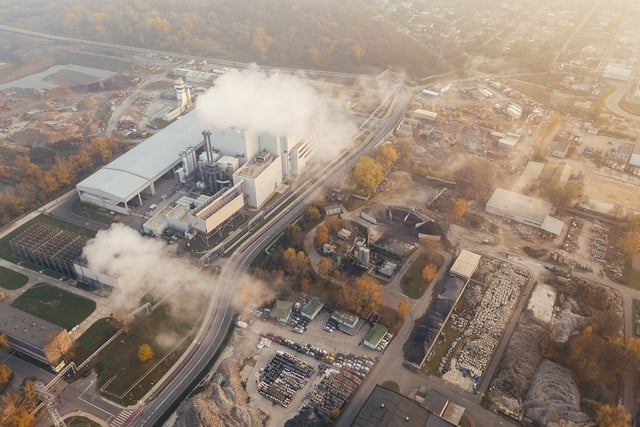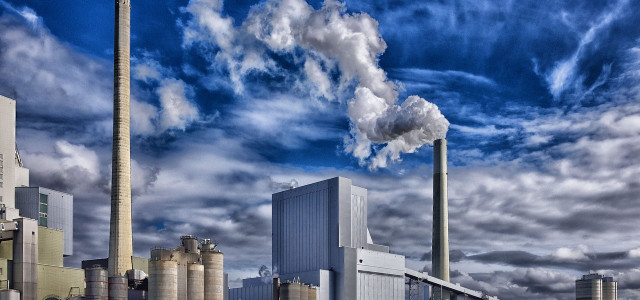Many consider blue hydrogen the cleanest way of producing hydrogen, but how green is it really? Join us as we delve into blue hydrogen's environmental impact.
Blue hydrogen is a versatile fuel that can power vehicles, buildings and other aspects of our daily lives. Hydrogen is a valuable fuel in and of itself, but its creation requires a unique procedure called hydrogen production. Several hydrogen production methods exist, each with different effects on efficiency and the environment.
Natural gas must be transformed into hydrogen using this special manufacturing process to produce blue, turquoise or gray hydrogen. While burning hydrogen does not emit the greenhouse gas carbon dioxide (CO2), the process of manufacturing hydrogen does. Therefore, blue, turquoise and gray hydrogen can cause significant harm to ecosystems if not handled carefully.
Interested in learning about the pros and cons of natural gas? Check out The Main Disadvantages of Natural Gas Explained.
The Difference Between Gray, Turquoise and Blue Hydrogen

(Foto: CC0 / Pixabay / Foto-Rabe)
When we use natural gas to produce hydrogen, we generate pollutants, like methane, which negatively impact the environment. However, manufacturing each variety creates unique byproducts that also have adverse effects. Simply said, some forms of hydrogen are “greener” than others.
There are a few key distinctions:
- Blue hydrogen: This type of hydrogen is created when natural gas and steam are combined at a high temperature and pressure, with carbon dioxide as a byproduct. These carbon emissions are captured and sequestered, making it a cleaner means of creating hydrogen than other methods by which carbon dioxide is released into the atmosphere.
- Gray hydrogen: Like blue hydrogen, gray hydrogen is produced using natural gas to make hydrogen; however, unlike blue, no special equipment is used to catch and store pollutants. This kind of hydrogen is often employed in industry for processes like refining, ammonia and methanol synthesis, and chemical company feedstock, the raw ingredients or chemicals that chemical businesses use to manufacture valuable products.
- Turquoise hydrogen: Turquoise hydrogen is a promising new source of hydrogen that is still in its infancy. Methane is broken down in this process to create hydrogen and store carbon. Though it has many of the same applications as blue and gray hydrogen, turquoise hydrogen may be the key to achieving a low-carbon energy future. However, more research and development is needed.
Potential Benefits of Blue Hydrogen



(Foto: CC0 / Pixabay / Krahulic)
The environmental benefits of using blue hydrogen are mainly related to its lower carbon footprint than traditional gray hydrogen production. The use of this type of hydrogen is considered necessary in moving toward a more environmentally friendly, zero-emissions future. Here are some reasons why it is potentially useful:
- Cutting greenhouse emissions — The carbon footprint of hydrogen generation may be reduced with the use of carbon capture and storage (CCS) technology for collecting and storing CO2 emissions from blue hydrogen synthesis. This can help in the battle against climate change by lowering emissions of greenhouse gases.
- Revolutionizing industries — Hydrogen has several uses in industry, including refining, making ammonia and methanol and creating steel. As a low-carbon fuel, it can mitigate the negative environmental impact of some industries. By switching to blue instead of gray hydrogen, manufacturers may be able to minimize their carbon footprints and embrace greener practices.
- Combining with renewable energy sources — By converting extra energy into hydrogen through electrolysis, blue hydrogen can help renewable energy sources, like solar or wind, become more efficient. This additional hydrogen can then be stored and used when renewable energy sources are not available, thus reducing wasted excess energy.
Note: After being captured, carbon is transported to a storage site and injected underground beneath rock formations in reservoirs for long-term storage. Capturing, compressing and transporting carbon dioxide is expensive, and storage sites may be scarce.
Environmental Drawbacks of Blue Hydrogen



(Foto: CC0 / Pixabay / marcinjozwiak)
However, it’s important to note that blue hydrogen is not a completely carbon-free fuel source. While it may offer some environmental benefits, it has ecological drawbacks, and some experts are skeptical about its effectiveness.
The biggest environmental concerns associated with blue hydrogen include:
- Release of methane: Methane, the primary component of natural gas, is necessary to create it. Over a 20-year time frame, methane is much more potent as a greenhouse gas than carbon dioxide. When natural gas is extracted, transported and processed, methane emissions occur. They can cancel out the carbon emissions prevented using CCS technology if not controlled.
- CCS leaks: One of the most significant issues with carbon capture and storage technology is that it’s not infallible. A Royal Society of Chemistry study on the impact of blue hydrogen found that carbon dioxide cleanup must still occur if blue hydrogen is ever to become net zero. While CCS technology is undeniably useful, it’s still prone to leakage over time. Some of blue hydrogen’s positive environmental effects may be nullified if CO2 seeps from storage sites and contributes to greenhouse gas emissions.
- Extremely energy intensive: Blue hydrogen generation is a highly energy-intensive process. Both the steam methane reforming process and the CCS procedure are energy-intensive. The increased need for power from fossil fuels means that creating this kind of hydrogen can indirectly contribute to greenhouse gas emissions.
- Practical limitations: Blue hydrogen generation is currently constrained due to the high cost of CCS technology and the necessity for infrastructure to transport and store the collected CO2 emissions. This suggests that it may not be a practical option everywhere or in every sector.
Dissecting the Hype



(Foto: CC0 / Pixabay / Witizia)
The good news is that blue hydrogen has many potential benefits. It can reduce greenhouse gas emissions more than traditional fossil fuel-based hydrogen production methods. This could pave the way for a revolutionized approach to handling natural gas and renewable energy sources.
Furthermore, it is not affected by weather or seasonal factors, which can interfere with renewable energy sources like solar or wind. The carbon capture and storage process currently appears promising for combating climate change.
However, our present reality is that this CCS technology has a long way to go before becoming widely available and cost-effective. So, touting it as a solution to carbon emissions isn’t entirely correct. Furthermore, blue hydrogen is still produced using natural gas — a fossil fuel. Thus, identifying it as a green solution is also inaccurate.
The future undoubtedly seems promising, particularly with turquoise hydrogen, but we still have a long way to go.
Read more:
- What Is Resource Depletion and Why Is It Dangerous?
- Do Carbon Offsetting Programs Actually Work?
- Safeguard Mechanism Explained: What Can the US Learn?
Do you like this post?








